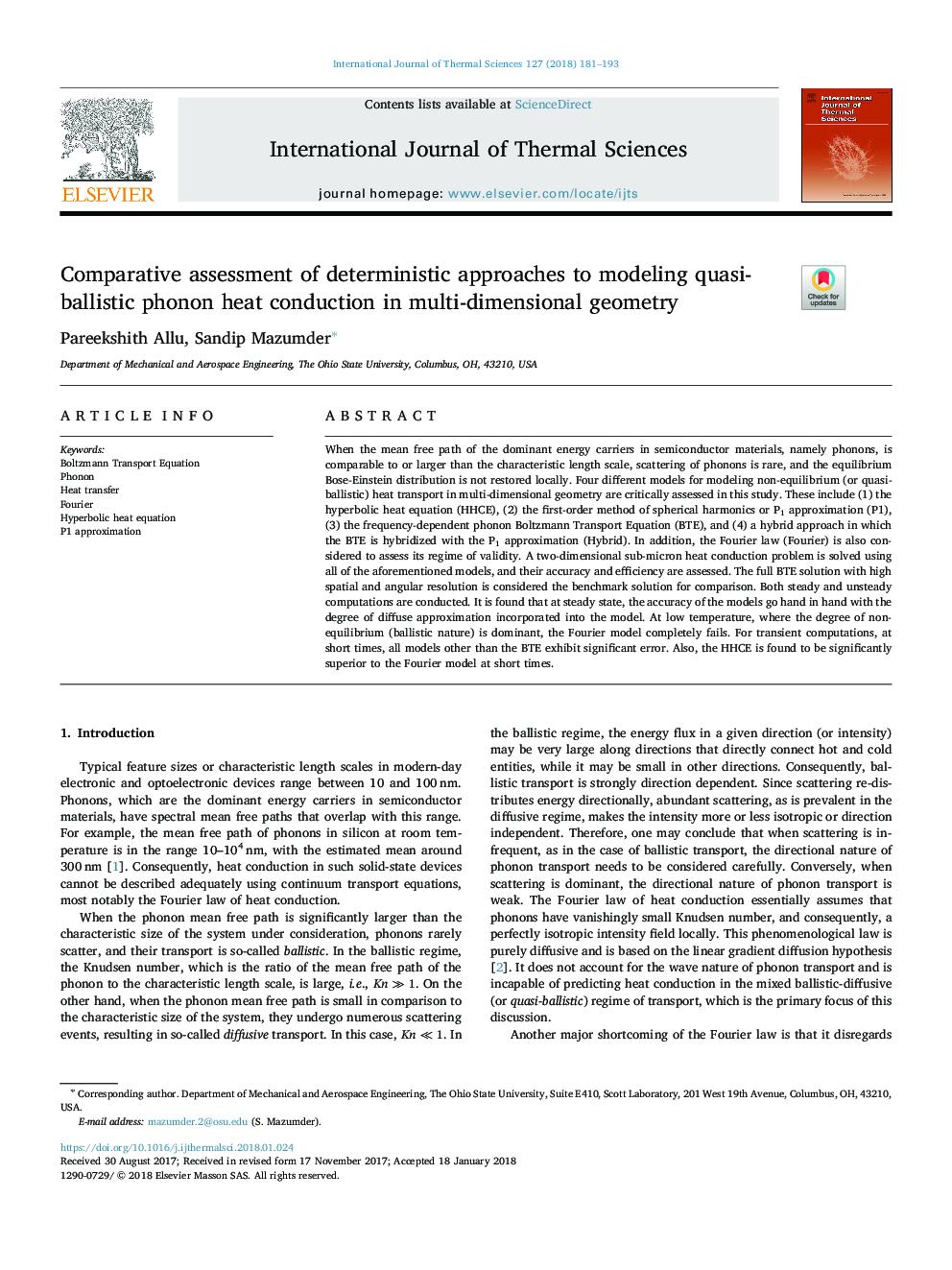| Article ID | Journal | Published Year | Pages | File Type |
|---|---|---|---|---|
| 7060761 | International Journal of Thermal Sciences | 2018 | 13 Pages |
Abstract
When the mean free path of the dominant energy carriers in semiconductor materials, namely phonons, is comparable to or larger than the characteristic length scale, scattering of phonons is rare, and the equilibrium Bose-Einstein distribution is not restored locally. Four different models for modeling non-equilibrium (or quasi-ballistic) heat transport in multi-dimensional geometry are critically assessed in this study. These include (1) the hyperbolic heat equation (HHCE), (2) the first-order method of spherical harmonics or P1 approximation (P1), (3) the frequency-dependent phonon Boltzmann Transport Equation (BTE), and (4) a hybrid approach in which the BTE is hybridized with the P1 approximation (Hybrid). In addition, the Fourier law (Fourier) is also considered to assess its regime of validity. A two-dimensional sub-micron heat conduction problem is solved using all of the aforementioned models, and their accuracy and efficiency are assessed. The full BTE solution with high spatial and angular resolution is considered the benchmark solution for comparison. Both steady and unsteady computations are conducted. It is found that at steady state, the accuracy of the models go hand in hand with the degree of diffuse approximation incorporated into the model. At low temperature, where the degree of non-equilibrium (ballistic nature) is dominant, the Fourier model completely fails. For transient computations, at short times, all models other than the BTE exhibit significant error. Also, the HHCE is found to be significantly superior to the Fourier model at short times.
Keywords
Related Topics
Physical Sciences and Engineering
Chemical Engineering
Fluid Flow and Transfer Processes
Authors
Pareekshith Allu, Sandip Mazumder,
